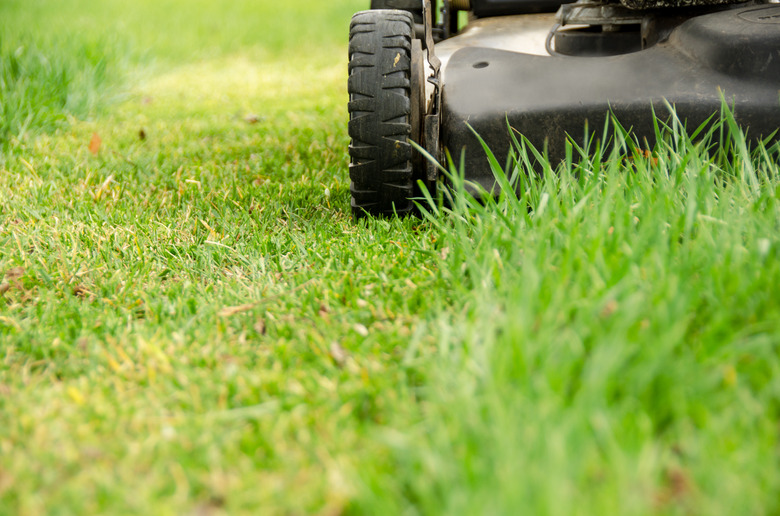Should I Cut My Grass Before Spraying It With Herbicide?
We may receive a commission on purchases made from links.
Herbicides are best used as a barrier to lawn weeds, as opposed to an attempt to kill them. Postemergent herbicides take the form of sprays that attach to the surface of the weed. Mowing the yard can impact the effectiveness of applying an herbicide. Successful use of the herbicide requires proper application. Always read the instructions on your choice of herbicides before applying the chemical to the yard.
Tip
You should cut your grass before applying preemergent or postemergent herbicides.
Applying Preemergent Herbicides
Applying Preemergent Herbicides
Preemergent herbicides take the form of sprays or granules. It's a misconception that preemergents prevent weed seeds from germinating. They actually work by creating a chemical barrier at the soil surface. When seeds germinate, or sprout, the emerging seedling pushes through this chemical barrier, which disrupts the development of the weed shoot and root. The best time to apply a preemergent herbicide is in late winter to early spring just before the weather begins to warm up.
When to Mow
When to Mow
The optimal time to apply preemergent herbicides occurs when most lawns haven't gone through their spring green-up, so mowing is unnecessary. But if your lawn needs cutting, mow it before applying a preemergent. Mowing the yard after the fact spreads the chemicals out over a broad area, which could damage plants and shrubs. The chemicals may also attach to the cut grass, which, if bagged or raked, is removed from the yard and therefore reduces the amount of chemicals on the lawn itself.
Cut the grass to a height of 2 to 3 inches and mow frequently. Apply herbicides immediately after mowing to be fully effective. Remember to water granules immediately or allow sprays to sit for a few days.
Applying Postemergent Herbicides
Applying Postemergent Herbicides
Postemergent herbicides target existing weeds. This type of herbicide is ideal for sudden sprouts. Spray the weed before it has a chance to flower and spread. One spray is often not enough. A good habit with postemergent herbicides is to mow the yard routinely and follow up the mowing by wandering around the yard while spraying the visible weeds.
Always choose a selective herbicide that targets weeds and not grass. For patches of weeds that are excessively stubborn, use a nonselective weed killer that targets everything. You will have a bare patch, but it is easier to grow grass in a bare patch than attempting to grow it amid a jungle of weeds.
Keeping Lawns Green and Healthy
Keeping Lawns Green and Healthy
Perfectly green lawns are not naturally occurring. The ideal method of getting a truly green yard is to develop patterns. Apply nitrogen-rich fertilizer four to five times per year. Use a standard fertilizer throughout the summer, based on soil-test recommendations.
Thick grass chokes off weeds, so seed your lawn in the spring or fall, depending on the turfgrass type you have. Use selective herbicides every time you mow, after you mow, to target the weeds when they appear. The best practice, once the yard is green and virtually weed-free, is to pull up weed sprouts — roots and all — by hand. The process is time-consuming but effective.
